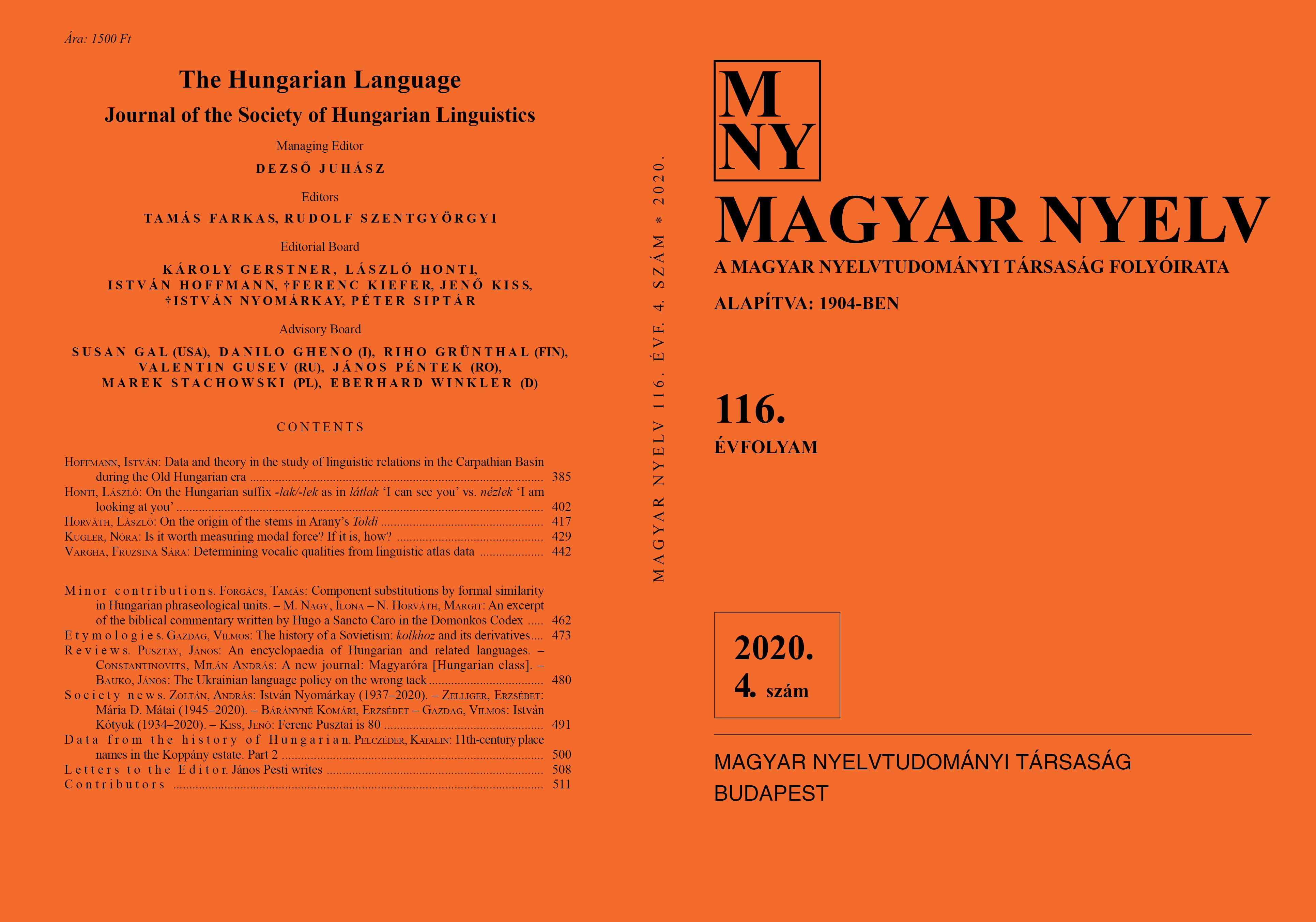Determining vocalic qualities from linguistic atlas data
DOI:
https://doi.org/10.18349/MagyarNyelv.2020.4.442Keywords:
Hungarian dialectology, vowel qualities, formant measurement, linguistic geography, dialect atlasesAbstract
In the past twenty years, the acoustic analysis of vowel qualities has become a standard approach in dialect research in general, and in dialect geography in particular. Usually, normalized vowel formant values are mapped and statistically analysed. While little has been done so far to describe the acoustic characteristics of non-standard varieties of Hungarian, there are more than one million data instances from computerised dialect atlases, mainly The Atlas of Hungarian Dialects (AHD), where articulatory details are reflected by the narrow phonetic transcription. Vocalic qualities are denoted in AHD with basic symbols and diacritics as needed, according to the standard Hungarian transcription system. The present study attempts to define, in a quantitative framework, the typical qualities of some vowels, based on the subjectively transcribed atlas data, and to assess the spatial evolution of these vocalic qualities. To this end, estimated F1 an F2 values are attributed to a number of combinations of vocalic symbols and diacritics. At each location of AHD, typical F1 and F2 values are calculated in function of the frequency of different vowel variants, as transcribed in the atlas, for the three most open vowels /a?/, /?/ and /?/. These typical F1 and F2 values are mapped so as to show the spatial differences in the phonetic quality of each vowel under investigation. For a better understanding of spatial patterns in vowel articulation, a large-scale dialect research focusing on acoustic measurements of vowels would be indispensable.
Downloads
Published
Issue
Section
License
Copyright (c) 2024 Fruzsina Sára Vargha

This work is licensed under a Creative Commons Attribution-NonCommercial-NoDerivatives 4.0 International License.
Magyar Nyelv is a Diamond Open Access periodical. Documents can be freely downloaded and duplicated in an electronic format, and can be used unchanged and with due reference to the original source. Such use must not serve commercial purposes. In the case of any form of dissemination and use, Hungarian Copyright Act LXXVI/1999 and related laws are to be observed. The electronic version of the journal is subject to the regulations of CC BY-NC-ND (Creative Commons – Attribution-NonCommercial-NoDerivatives).
The journal permits its authors, at no cost and without any temporal limitation, to make pre-print copies of their manuscripts publicly available via email or in their own homepage or that of their institution, or in either closed or free-for-all repositories of their institutions/universities, or other non-profit websites, in the form accepted by the journal editor for publication and even containing amendments on the basis of reviewers’ comments. When the authors publicize their papers in this manner, they have to warn their readers that the manuscript at hand is not the final published version of the work. Once the paper has been published in a printed or online form, the authors are allowed (and advised) to use that (post-print) version for the above purposes. In that case, they have to indicate the exact location and other data of the journal publication. The authors retain the copyright of their papers; however, in the case of an occasional secondary publication, the bibliographical data of the first publication have to be included.



